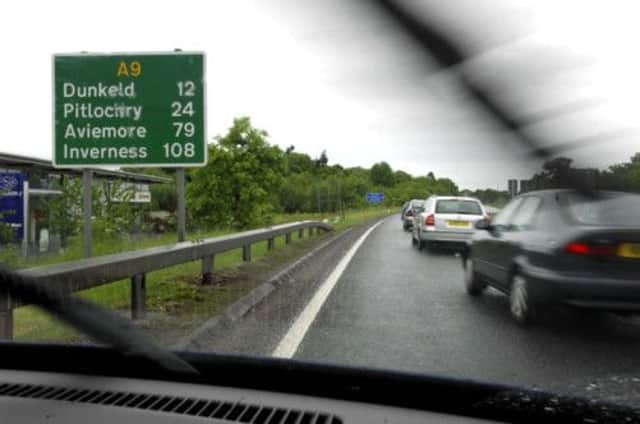Tree felling considered to reduce crashes on A9


The news came as a publicity campaign to educate drivers on safe overtaking on the largely single-carriageway road was announced.
The measures come on top of the planned £2.5 million installation of average speed cameras over the 136-mile section of the route between Dunblane and Inverness by next summer.
Advertisement
Hide AdAdvertisement
Hide AdMinisters have pledged to complete dualling of that section by 2025, at a cost of some £3 billion.
Responding to calls to accelerate the work, they have said the “programme is already ambitious” and the proposed 2015 start date is the earliest that preparations “might reasonably be complete”.
More than three in four of the most serious crashes between Perth and Inverness occur on single carriageway sections.
Lorries are nearly three times as likely to be involved in crashes involving injuries on these stretches than on other single carriageways in Scotland - but are not necessarily to blame.
The dangers of trees and bushes obscuring drivers’ view of the road ahead on the many sweeping curves on the A9 was highlighted by Scotland on Sunday last year.
Road safety chiefs from the Scottish Government’s Transport Scotland agency, which is responsible for most of the A9, said yesterday: “We are reviewing forward visibility as well as visibility at junctions to see if there are benefits from vegetation and landscaping work.”
The overtaking campaign, to be launched ahead of the cameras being installed, is expected to highlight how drivers can increase the risk of crashes even without speeding or overtaking.
Some fail to leave enough space behind the vehicle in front of them for other motorists to pull in after overtaking.
Advertisement
Hide AdAdvertisement
Hide AdPolice Scotland said extra motorcycle patrols were being drafted in and errant drivers faced £100 fixed penalties for tailgating.
Transport Scotland said the cameras, to be sited around every four miles to measure speeds over set distances, would also make overtaking safer by cutting speeds.
They believe the cameras will also “modify” drivers’ behaviour, reducing their expectations about how fast they could reach their destination.
Research by TRL - the former government Transport Research Laboratory - showed the cameras were expected to cut fatal crashes by 36 per cent, with a 19 per cent reduction in the first year.
But it also found that increasing lorry speeds on single carriageway sections from 40mph to 50mph - which the police said many HGVs travel at already - would not improve safety.
Stewart Leggett, the chair of the A9 Safety Group, which includes police and local authorities, said: “We have not ruled out the introduction of 50mph speed limits for heavy goods vehicles (HGVs) in future if evidence supports it.
“However, for the time being, the best available evidence suggests that cameras with a 40mph HGV limit will bring the greatest safety benefits.”
The group also yesterday launched a new website, www.a9road.info, to provide further information about the cameras and speed limits.
Advertisement
Hide AdAdvertisement
Hide AdSenior police officers told The Scotsman the A9 had fewer crashes than other trunk roads, with a rate of 8.3 collisions per 100 million vehicle kilometres, compared to the average of 18.
They said only two sections had higher than average crash rates, both on dual carriageway stretches south of Perth.
A total of 63 people have been killed on the A9 between Dunblane and Thurso over the last five years, but numbers have been falling since 2010, with 13 deaths in 2011, eight in 2012 and five so far this year.